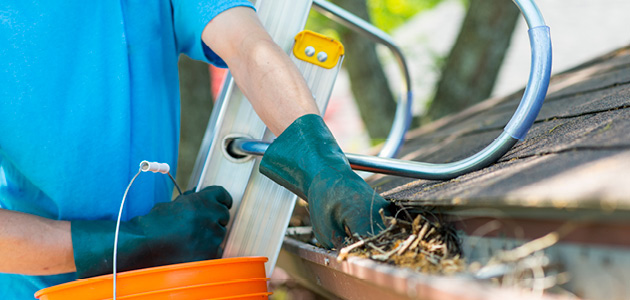Wildfires can be devastating. Thankfully, we’ve got information from the University of Waterloo’s Intact Centre on Climate Adaptation that can go a long way to preventing wildfire damage to your home. We’re also sharing a look at what makes a community more prepared to mitigate wildfires.
Wildfire climate risk factors
In 2023, Canada faced one of the worst wildfire seasons on record, with 19 million hectares burned and millions of people losing their homes and being displaced across the country.1
Over at the World Weather Attribution, scientific experts have found a doubled likelihood of wildfires happening in areas of Eastern Canada.2
Both findings are alarming and are a stark realization that climate change in Canada is a real threat to the well-being of Canadians and their communities.
Keeping your home wildfire-ready
Step 1: Keeping your home maintained
Most everyday ways to properly maintain your home to fight wildfires can be done on your own and typically cost anywhere from nothing to $300.
- Clear your home’s gutters, roof, decks and balconies of leaves and other debris.
- Keep any mulch and plants at least one and a half meters from the home, and move any firewood and lumber stored 10 metres away from your home.
- Mow your lawn consistently to keep its length down and plant-low growing shrubs.
- Prune any trees on your property for a two-metre clearance to the ground.
Step 2: Time for a few simple upgrades
These particular tips usually cost anywhere from $300-$3,000 and are relatively smaller fixes for the outside of your home.
- Update any weather stripping on your home’s doors, including any garage doors.
- Add a non-combustible three-millimetre screen to all outdoor vents, but not dryer vents.
- Install a cement board or metal skirting to create a 15-centimetre ground-to-siding non-combustible clearance around your home.
- Add non-combustible fencing (cement fiber, metal, chain link or stone) and ground surfaces (mineral soil, rock, concrete or stone) within one and a half metres of your home.
Step 3: Bigger updates for a long-lasting difference
The final step to protecting your home from wildfires is all about larger updates that can be costly and may require working with a contractor. But they are invaluable to keeping your home safe.
- Add a Class A fire-resistant roof covering like cement fibre, metal or asphalt shingles.
- Install non-combustible siding like stucco, metal, stone or cement fibre board.
- Change your home’s windows to multi-pane or tempered glass.
- If you have a deck, ensure it’s retrofitted with fire-rated components and remove any conifer trees within 10 metres of your home.
Here are three features of wildfire-ready communities
When communities work with Provincial/Territorial wildfire agencies and municipal/structural fire departments, they can tap into helpful tools and resources to develop action plans. Let’s look at a few examples of wildfire prevention features in communities.
Feature 1: Keeping structures maintained and ready
- Regular maintenance of structures and landscaping within 10 metres of buildings, including removing any flammable materials and dry debris like leaves and brush piles.
- Landscaping should be done within 10 meters of structures, and always use fire-resistant materials. Buildings should also be updated with fire-resistant materials like metal roofs, non-combustible siding and metal or concrete hydro poles.
- Communities should plan to have a minimum of five-metre distance between power lines and vegetation.
Feature 2: Community design with wildfires in mind
- Communities should ideally have a minimum 30 metre wild zones or fire breaks to limit the spread of any fires.
- More distance between structures can also work to prevent fires from spreading.
- Planners should ensure that any structures are at least 10 metres from the crest of any hills to help prevent fires from spreading.
Feature 3: Wildfire emergency response
- Annual emergency planning and training exercises for first responders.
- Have at least one designated emergency shelter per community.
- Provide two or more larger-sized access routes to help give emergency vehicles more room to move around the community.
Download this handy tip sheet on ways you can protect your home from wildfires in Canada.
Foresters grants can help fight wildfires!
Use a $2,000 Community Volunteer grant, to help support emergency shelters and first responders in your community.
A twice-a-year $200 Foresters Care™ grant can go a long way to helping vulnerable people in your community with home upgrades to ensure they are better protected in the event of a wildfire.
Both grants are available twice yearly and you can find sample applications on MyForesters to help you get started. This handy resource can help you see what the applications look like and provide some ideas about the activities you can do with each grant.
When you give back with a Community Volunteer or Foresters Care grant, you can also earn Rewards Points on Foresters Go™️, our wellness app available to Foresters members. You can redeem your Rewards Points on the online store for electronics, appliances, gift cards, donations to charities and more!
Head over to MyForesters and check out these powerful grants now!
SOURCES
1 https://climateinstitute.ca/canada-fires-forest-sector/
423435 US/CAN (05/24)

